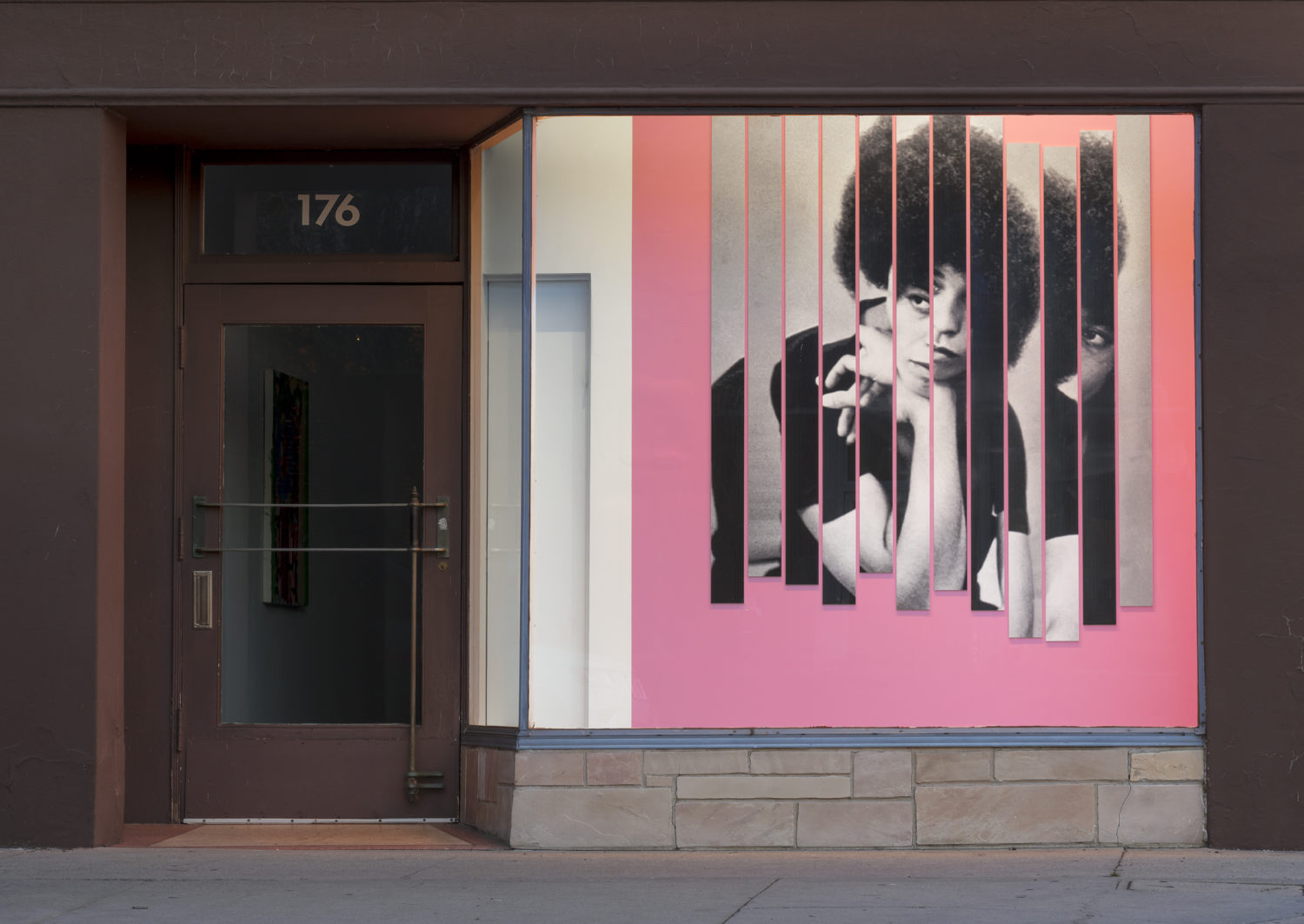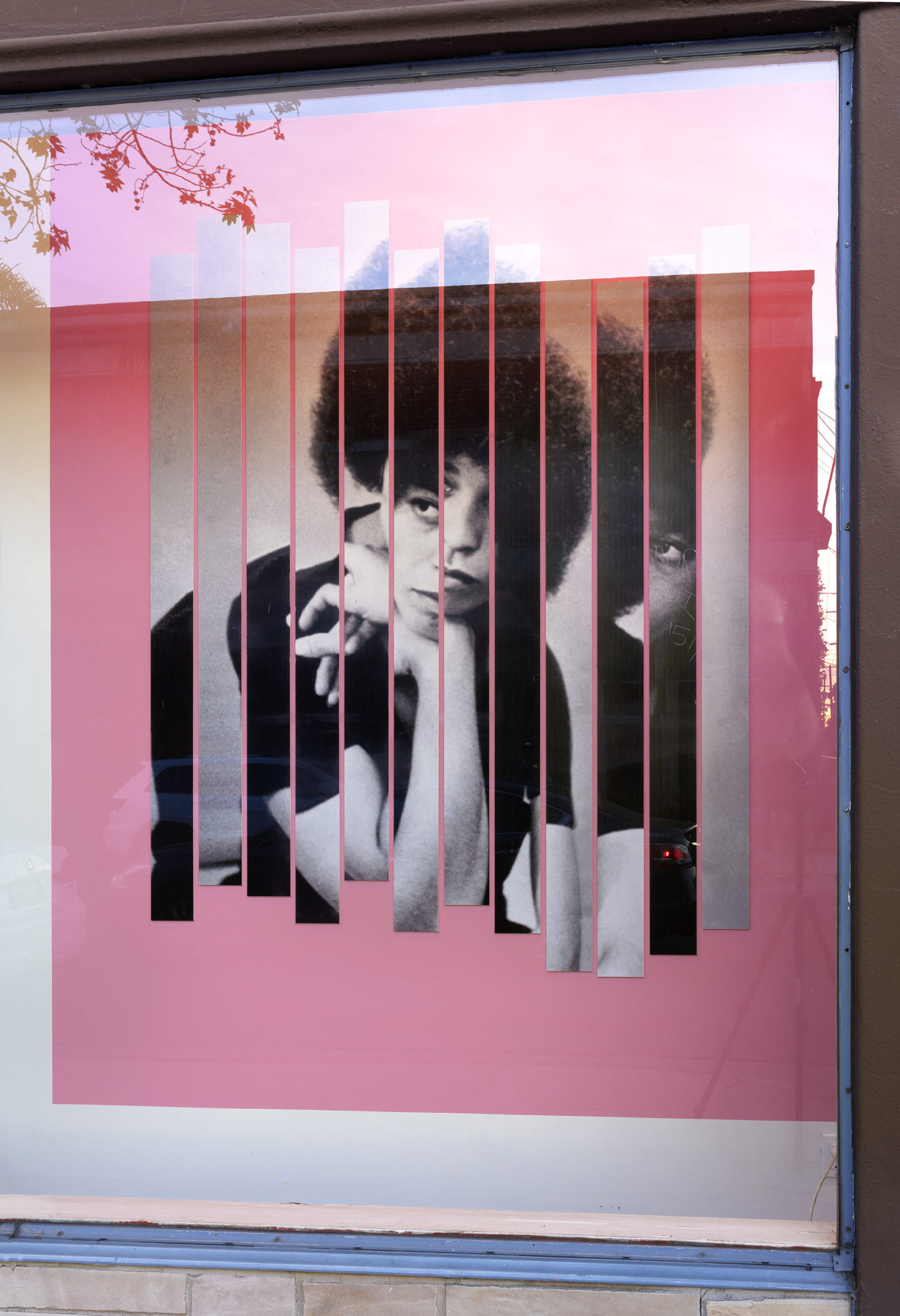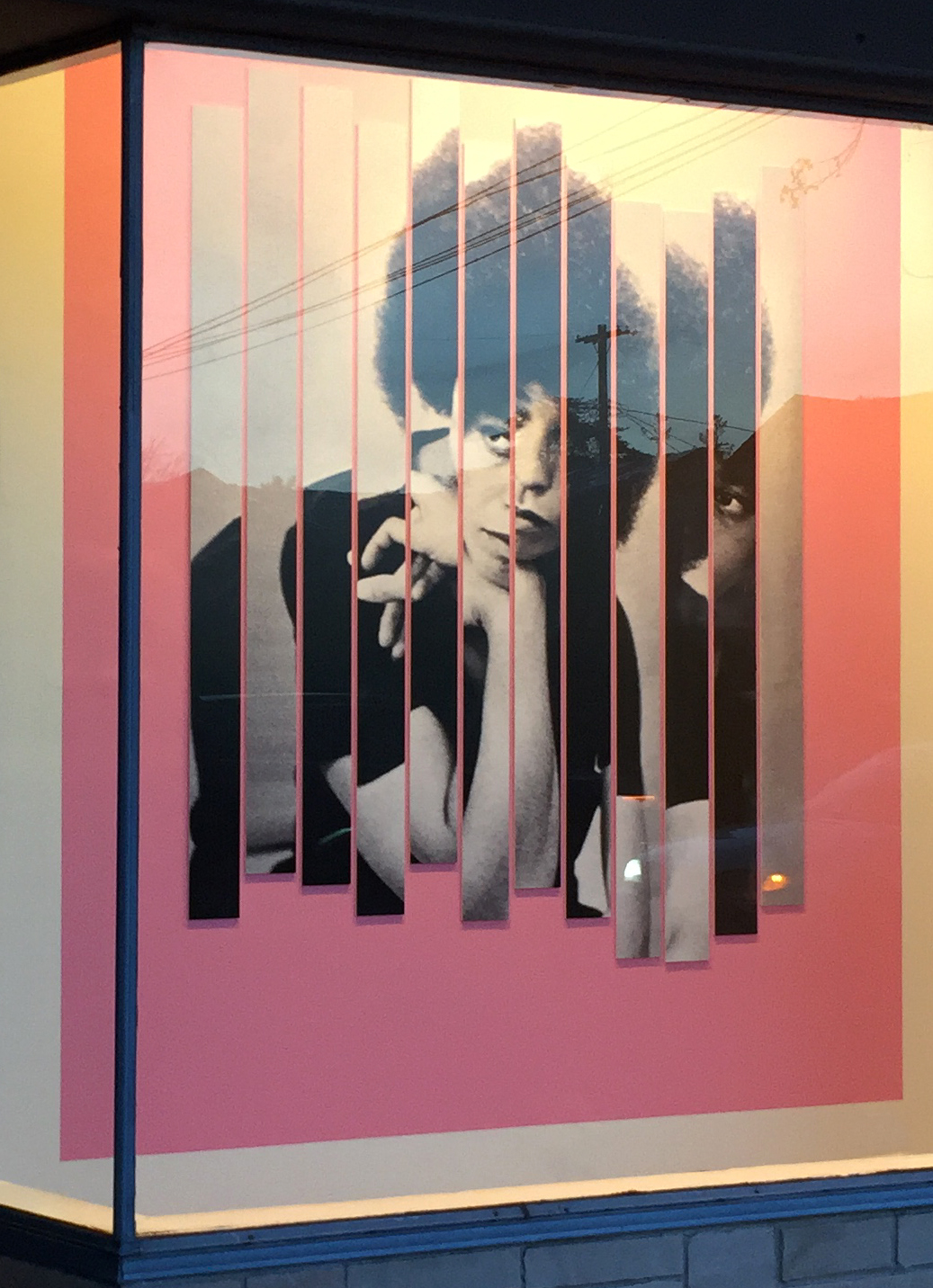
90” x 74”
Richard Telles Gallery



Pink and Blue is based on a small collage from a recent series. The series is comprised of black and white portraits that are placed into narrow vertical or horizontal strips and then slightly rearranged so that the image is out of order but still recognizable.
The reference to facial recognition has to do with a number of considerations. William Burroughs talked about his “cut-up” technique as a way to open up language from the present and release it into the future. This act opens up the images of these individuals, evoking the past with some familiarity, and also the present. Somewhere between recognition and an image out of order, a glitch, or an arbitrary gesture allows the noise to enter into the image. These rearranged images are collaged on a field of color that both frames and isolates them in space.
This image evokes the past predominantly because of Davis’s natural Afro, which at the time was a powerful political expression of black solidarity in the face of intense racism and oppression. This was also a time when Angela Davis was in the media for her involvement with the Soledad prison controversy, the Black Panthers, and her image had become an icon of black power and resistance.
This shade of pink evokes a special brand of pink color known as Baker-Miller Pink, developed in the 1970’s. Baker-Miller Pink is claimed to reduce hostile, violent or aggressive behavior. Alexander Schauss did extensive research into the effects of the color on emotions at the Naval Correctional Facility in Seattle, and named it after the institute directors, Baker and Miller. The use of this color reflects the subliminal mechanisms of control and oppression that were prevalent in the 1970’s and to the present. Functioning as a remixed sign, Pink and Blue is an homage to Angela Davis and a site revisiting a moment of cultural history while activating our collective amnesia.